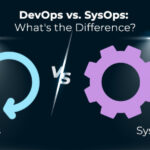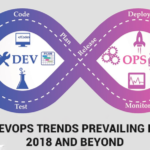The Simple Network Management Protocol (SNMP) is an application layer protocol that facilitates the exchange of management information between network devices. It is part of the Transmission Control Protocol/Internet Protocol (TCP/IP) protocol suite.Two versions of SNMP exist: SNMP version 1 (SNMPv1) and SNMP version 2 (SNMPv2). Both versions have a number of features in common, but SNMPv2 offers enhancements, such as additional protocol operations.
Components of SNMP
An SNMP-managed network consists of three key components: managed devices, agents, and network-management systems (NMSs). A managed device is a network node that contains an SNMP agent and that resides on a managed network. Managed devices collect and store management information and make this information available to NMSs using SNMP. Managed devices, sometimes called network elements, can be routers and access servers, switches and bridges, hubs, computer hosts, or printers. An agent is a network-management software module that resides in a managed device. An agent has local knowledge of management information and translates that information into a form compatible with SNMP.An NMS executes applications that monitor and control managed devices. NMSs provide the bulk of the processing and memory resources required for network management. One or more NMSs must exist on any managed network.
Common commands
The read command is used by an NMS to monitor managed devices. The NMS examines different variables that are maintained by managed devices.
The write command is used by an NMS to control managed devices. The NMS changes the values of variables stored within managed devices.
The trap command is used by managed devices to asynchronously report events to the NMS. When certain types of events occur, a managed device sends a trap to the NMS.
Traversal operations are used by the NMS to determine which variables a managed device supports and to sequentially gather information in variable tables, such as a routing table
MIB (Management Information Base)
A Management Information Base (MIB) is a collection of information that is organized hierarchically. MIBs are accessed using a network-management protocol such as SNMP. They are comprised of managed objects and are identified by object identifiers. A managed object (sometimes called a MIB object, an object, or a MIB) is one of any number of specific characteristics of a managed device. Managed objects are comprised of one or more object instances,which are essentially variables. The top-level MIB object IDs belong to different standards organizations, while lower-level object IDs are allocated by associated organizations.Vendors can define private branches that include managed objects for their own products. MIBs that have not been standardized typically are positioned in the experimental branch.The managed object atInput can be uniquely identified either by the object name—iso.identified- organization.dod.internet.private.enterprise.cisco.temporary
variables.AppleTalk.atInput—or by the equivalent object descriptor, 1.3.6.1.4.1.9.3.3.1.
SNMP version 1
SNMP version 1 (SNMPv1) is the initial implementation of the SNMP protocol. It is described in Request For Comments (RFC) 1157 and functions within the specifications of the Structure of Management Information (SMI). SNMPv1 operates over protocols such as User Datagram Protocol (UDP), Internet Protocol (IP), OSI Connectionless Network Service (CLNS), AppleTalk Datagram-Delivery Protocol (DDP), and Novell Internet Packet Exchange (IPX). SNMPv1 is widely used and is the de facto network-management protocol in the Internet community
SNMP MIB tables
The SNMPv1 SMI defines highly structured tables that are used to group the instances of a tabular object (that is, an object that contains multiple variables). Tables are composed of zero or more rows, which are indexed in a way that allows SNMP to retrieve or alter an entire row with a single Get, GetNext, or Set command.
SNMP V1 protocol operation
SNMP is a simple request/response protocol. The network-management system issues a request, and managed devices return responses. This behavior is implemented by using one of four protocol operations: Get, GetNext, Set, and Trap. The Get operation is used by the NMS to retrieve the value of one or more object instances from an agent. If the agent responding to the Get operation cannot provide values for all the object instances in a list, it does not provide any values. The GetNext operation is used by the NMS to retrieve the value of the next object instance in a table or a list within an agent. The Set operation is used by the NMS to set the values of object instances within an agent. The Trap operation is used by agents to asynchronously inform the NMS of a significant event.
SNMP V2
SNMP version 2 (SNMPv2) is an evolution of the initial version, SNMPv1. Originally, SNMPv2 was published as a set of proposed Internet standards in 1993; currently, it is a draft standard. As with SNMPv1, SNMPv2 functions within the specifications of the Structure of Management Information (SMI). In theory, SNMPv2 offers a number of improvements to SNMPv1, including additional protocol operations.
SNMP V2 protocol operation
The Get, GetNext, and Set operations used in SNMPv1 are exactly the same as those used in SNMPv2. However, SNMPv2 adds and enhances some protocol operations. The SNMPv2 Trap operation, for example, serves the same function as that used in SNMPv1, but it uses a different message format and is designed to replace the SNMPv1 Trap. SNMPv2 also defines two new protocol operations: GetBulk and Inform. The GetBulk operation is used by the NMS to efficiently retrieve large blocks of data, such as multiple rows in a table. GetBulk fills a response message with as much of the requested data as will fit. The Inform operation allows one NMS to send trap information to another NMS and to then receive a response. In SNMPv2, if the agent responding to GetBulk operations cannot provide values for all the variables in a list, it provides partial results.
For highly competitive pricing and excellent web hosting support services do contact InstaCarma today!















